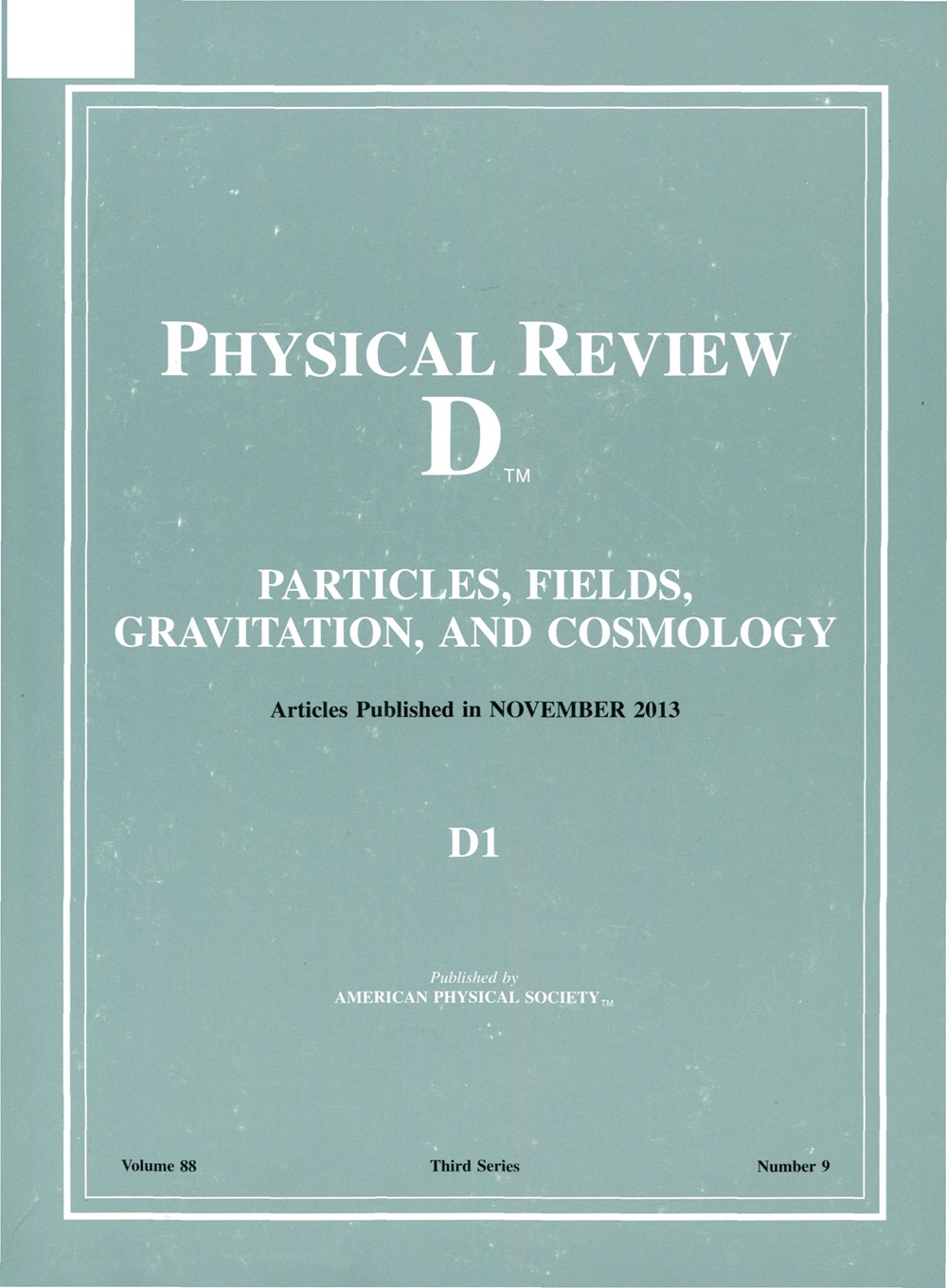弦和M理论中的全息复杂性
IF 5.3
2区 物理与天体物理
Q1 Physics and Astronomy
引用次数: 0
摘要
到目前为止,关于全息复杂性的文献几乎完全集中在(d+1)维反德西特时空的背景下,而不是弦或M理论中完整的高维规范/重力二象性。我们提供了一个研究全对偶全息复杂性的框架,解释了高维理论中的复杂性泛函与反德西特时空中的复杂性泛函的关系,以及复杂性泛函何时可以普遍应用于规范/重力对偶而不是特定的对偶。我们还以10维和11维超重力作用为例,证明了规范不变性约束了复杂泛函的边界项。最后,根据这些考虑,我们提出了新的通用复杂性函数,包括修订的规范不变动作复杂性。2025年由美国物理学会出版本文章由计算机程序翻译,如有差异,请以英文原文为准。
Holographic complexity in string and M theory
Thus far, the literature regarding holographic complexity almost entirely focuses on the context of (d+1)-dimensional anti–de Sitter spacetime rather than the full higher-dimensional gauge/gravity duality in string or M theory. We provide a framework to study holographic complexity in the full duality, explaining the relation of complexity functionals in the higher-dimensional theory to those in anti–de Sitter spacetime and when complexity functionals can apply universally to gauge/gravity dualities rather than a specific dual pair. We also show that gauge invariance constrains boundary terms for complexity functionals, using the 10- and 11-dimensional supergravity actions as key examples. Finally, we propose new universal complexity functionals following these considerations, including a revised gauge-invariant action complexity. Published by the American Physical Society 2025
求助全文
通过发布文献求助,成功后即可免费获取论文全文。
去求助
来源期刊

Physical Review D
物理-天文与天体物理
CiteScore
9.20
自引率
36.00%
发文量
0
审稿时长
2 months
期刊介绍:
Physical Review D (PRD) is a leading journal in elementary particle physics, field theory, gravitation, and cosmology and is one of the top-cited journals in high-energy physics.
PRD covers experimental and theoretical results in all aspects of particle physics, field theory, gravitation and cosmology, including:
Particle physics experiments,
Electroweak interactions,
Strong interactions,
Lattice field theories, lattice QCD,
Beyond the standard model physics,
Phenomenological aspects of field theory, general methods,
Gravity, cosmology, cosmic rays,
Astrophysics and astroparticle physics,
General relativity,
Formal aspects of field theory, field theory in curved space,
String theory, quantum gravity, gauge/gravity duality.
 求助内容:
求助内容: 应助结果提醒方式:
应助结果提醒方式:


